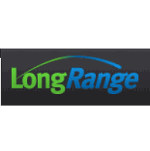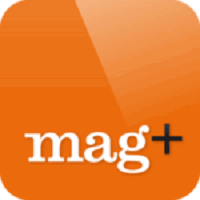Description

LongRange

Mag+ Application Development
Comprehensive Overview: LongRange vs Mag+ Application Development
LongRange and Mag+ are both tools used for application development, but they target different markets and have different primary functions and features.
a) Primary Functions and Target Markets
LongRange:
-
Primary Functions: LongRange is a mobile development tool designed specifically for creating mobile applications from IBM i (AS/400) systems without requiring knowledge of HTML5, CSS, or JavaScript. It enables developers to build native mobile applications by using existing RPG/COBOL code and other legacy systems that businesses often use.
-
Target Markets: LongRange mainly targets enterprises that rely on IBM i systems for their business operations. These are typically industries with legacy IT infrastructure such as finance, manufacturing, and supply chain management. Organizations within these sectors often seek ways to modernize their existing systems to integrate with mobile technologies.
Mag+ Application Development:
-
Primary Functions: Mag+ is a digital publishing platform used for creating mobile applications that deliver content such as magazines, corporate materials, brochures, etc., particularly tailored for tablets and smartphones. Its focus is on ease of design and content-centric applications, allowing designers to transform their Adobe InDesign projects directly into interactive mobile applications using the Mag+ plugin.
-
Target Markets: The target market for Mag+ includes publishers, media companies, corporate communication teams, and marketing departments. It serves industries focused on media-rich, content-heavy applications such as publishing and marketing.
b) Market Share and User Base
-
LongRange: LongRange's market share is relatively niche due to its specific focus on IBM i systems. Its user base largely consists of companies that depend on these legacy systems and are looking to extend their capabilities to mobile platforms without overhauling their existing infrastructure.
-
Mag+: Mag+, on the other hand, has a broader appeal in the digital content space. Its potential market is wider due to the growing need for interactive and visually engaging digital content, particularly among publishers and corporate communications. Despite this, competition in the digital publishing space is fierce with numerous tools and platforms vying for market share.
Because both products cater to different market needs, direct comparison in terms of market share and user base is challenging. However, Mag+ likely has a broader reach given the larger number of organizations looking for digital publishing solutions compared to the specialized market of IBM i users targeted by LongRange.
c) Key Differentiating Factors
-
Technology and Integration: LongRange is designed to work seamlessly with IBM i systems, offering a native app development approach that leverages existing codebases. It is a tool for enterprises looking to modernize their legacy environments. Mag+, however, focuses on digital content creation and publishing, providing designers with capabilities to create visually rich and interactive content.
-
Ease of Use and Design: Mag+ is built with a focus on design professionals and is integrated with Adobe InDesign. It is aimed at users who prioritize content design and interactivity. LongRange caters more to developers and IT departments within organizations who need to mobilize business processes and applications traditionally confined to desktop environments.
-
Purpose and Output: The end products are different; LongRange produces business-oriented apps for enterprise use, tapping into existing backend systems, while Mag+ creates visually appealing, content-heavy apps meant for consumer engagement, publication, or internal communications.
In summary, while both LongRange and Mag+ are tools for mobile application development, they serve different purposes and markets. LongRange is pivotal for enterprises looking to extend legacy system functionalities to modern mobile platforms, while Mag+ is designed to streamline the creation and distribution of interactive digital content.
Contact Info

Year founded :
2011
Not Available
Not Available
Cyprus
http://www.linkedin.com/company/longrange-ltd-

Year founded :
Not Available
Not Available
Not Available
Not Available
Not Available
Feature Similarity Breakdown: LongRange, Mag+ Application Development
To provide a feature similarity breakdown for LongRange and Mag+ Application Development, let's analyze the information based on typical functionality you might expect from these types of application development platforms. Keep in mind that specific data on these products might be subject to change, and for the most accurate and up-to-date details, consulting official product documentation would be most reliable.
a) Core Features in Common
LongRange and Mag+ Application Development may share the following core features:
-
Cross-Platform Development:
- Both platforms likely allow for development across multiple mobile and desktop platforms, thereby providing users with the ability to reach a wider audience.
-
Integrated Development Environment (IDE):
- They probably both offer an IDE with essential tools needed for coding, debugging, and testing applications.
-
Support for Common Programming Languages:
- Support for popular language options used in app development such as JavaScript, Python, or HTML/CSS could be expected.
-
User Interface Components:
- Pre-built UI components and templates to accelerate development processes are typically provided.
-
Access to Device Features:
- APIs for accessing native device features like GPS, camera, notifications, and sensors could be part of both tools' offerings.
-
Cloud Integration:
- Both may offer cloud service integration facilitating data storage, user authentication, and scalability solutions.
-
Community and Support Resources:
- Accessibility to a community for troubleshooting and sharing best practices, alongside official support, would likely be common.
b) User Interface Comparison
LongRange UI:
-
Typically known for providing a straightforward, no-frills environment primarily focused on developers who need direct access to backend data and business logic.
-
Could focus on providing a robust interface for integrating enterprise data systems, possibly offering command-based navigation or simplicity that prioritizes functionality.
Mag+ Application Development UI:
-
Often caters to more visually driven industries, perhaps offering an interface that is more graphics-oriented, with emphasis on design, layout customization, and visual edits.
-
Interface might feature a drag-and-drop functionality for ease of creating visually rich and interactive content, appealing to users with a focus on design and aesthetics.
c) Unique Features
LongRange:
- Enterprise Integrations:
- Might offer deeper integrations with enterprise systems like SAP, Oracle, or other business logistics platforms, appealing to businesses with existing infrastructure.
- Backend Focused Development:
- Could provide specific tools or frameworks for dealing with complex backend logic, making it unique for certain business applications.
Mag+ Application Development:
-
Rich Media Publishing:
- Likely excels in providing tools for creating interactive and multimedia-rich publications, ideal for digital magazines and brochures.
-
Intuitive Design Tools:
- Known for robust design capabilities that allow for extensive customization and user engagement through interactive designs.
-
Content Management:
- May offer specific features for managing and publishing content effectively, with a high degree of customization and interactivity preferred by designers.
In conclusion, while LongRange and Mag+ might share foundational application development features, they cater to different primary user needs—LongRange more focused on backend and enterprise integration, and Mag+ towards design and media-rich applications. Each offers unique features that set them apart according to their target audiences and use cases.
Features

Mobile App Development
Integration
User Interface Design
Security

User Interface Design
Content Management
Performance Optimization
Best Fit Use Cases: LongRange, Mag+ Application Development
LongRange and Mag+ Application Development cater to different use cases and business needs, leveraging their unique strengths and capabilities to suit specific project requirements.
LongRange Application Development:
a) Best Fit Use Cases for LongRange
-
Types of Businesses/Projects:
- Enterprise-Grade Applications: LongRange is ideal for large enterprises that need robust, scalable mobile applications integrated with existing IBM i systems. These organizations often require secure, high-performance apps that can handle complex business logic.
- Legacy System Integration: Companies that rely on legacy systems like IBM i AS/400 will find LongRange suitable for extending the life and capabilities of their existing infrastructure without major overhauls.
- Industries: Manufacturing, logistics, and finance sectors, where robust backend systems are critical and integration with iSeries systems is essential.
-
Scenarios:
- Internal Process Automation: When businesses aim to automate and optimize internal processes, LongRange can help by leveraging current legacy systems to implement mobile solutions.
- Field Services and Logistics: Companies in field service management or logistics may prefer LongRange for real-time data access and seamless integration with legacy systems.
Mag+ Application Development:
b) Best Fit Use Cases for Mag+
-
Types of Businesses/Projects:
- Content-Driven Applications: Mag+ is tailored for businesses that require engaging, visually-rich mobile applications. It's ideal for projects centered around digital publications, interactive magazines, and marketing content.
- Media and Publishing Industry: Companies in the media and publishing sectors that need a platform to easily distribute content to mobile devices.
- Creative Agencies: Mag+ is a good choice for creative agencies working on multimedia projects that require a high degree of interactivity and design flexibility.
-
Scenarios:
- Digital Publication Launches: Businesses launching digital magazines or newsletters will find Mag+ fitting due to its emphasis on user experience and interactive content.
- Marketing Campaigns: For campaigns requiring apps rich with multimedia content, animations, and interactive features, Mag+ provides the tools to engage users effectively.
How the Products Cater to Different Industry Verticals or Company Sizes:
-
LongRange:
- Industry Vertical Adaptation: LongRange caters to traditional industries that rely on stability and have significant investment in legacy systems. It's particularly well-suited for industries where backend reliability and data integrity are paramount.
- Company Size: Mostly benefits medium to large enterprises with established IT infrastructures that need to encapsulate legacy functionality into modern mobile applications.
-
Mag+:
- Industry Vertical Adaptation: Geared towards dynamic industries where visual storytelling is important, such as publishing, media, retail, and marketing.
- Company Size: While beneficial for large media houses, Mag+ is equally suitable for small to medium-sized companies or individual creators looking to produce high-quality interactive content without extensive programming resources.
Both LongRange and Mag+ serve specific needs but differ fundamentally in their approach and target audience, making them suitable for varied applications across industry verticals and company sizes.
Pricing

Pricing Not Available

Pricing Not Available
Metrics History
Metrics History
Comparing undefined across companies
Conclusion & Final Verdict: LongRange vs Mag+ Application Development
Conclusion and Final Verdict for LongRange vs. Mag+ Application Development
a) Best Overall Value:
LongRange offers the best overall value when considering all factors. Its ability to extend existing IBM i applications into mobile applications without requiring web development knowledge is a significant advantage for businesses operating within that ecosystem. It provides a seamless transition for organizations already using IBM i platforms, minimizing the learning curve and reducing development time and costs.
b) Pros and Cons:
LongRange:
-
Pros:
- Native mobile application development specifically for IBM i, allowing for a direct and simple integration without the need for web technology expertise.
- Reduces development time by leveraging existing resources and skills.
- Highly secure, leveraging the robust security features inherent in IBM i.
- Excellent for organizations heavily invested in IBM technologies.
-
Cons:
- Limited to the IBM i ecosystem, thus not suitable for businesses using other platforms.
- May not offer the flexibility or modern web-centric features that developers seeking broader application capabilities might require.
Mag+:
-
Pros:
- Versatile platform for creating interactive digital content across various mobile devices, suitable for publishers and media companies.
- Drag-and-drop interface allows for easy content design and prototyping.
- Enables rich media integrations and vibrant user interactions, advantageous for marketing and digital publishing.
-
Cons:
- Primarily designed for content delivery rather than application development, limiting its scope for building enterprise applications.
- May require additional technical resources or integrations for more complex, feature-rich applications.
- Not tailored for those looking to develop backend-heavy business applications.
c) Recommendations:
-
For Companies Using IBM i: LongRange is the clear choice due to its native capabilities and ease of integration with existing systems. It streamlines the process of bringing IBM i applications to mobile devices, which is beneficial for companies with significant investments in those systems.
-
For Content-Driven Businesses: If the primary focus is on interactive content and media-rich applications, Mag+ is the recommended choice. It offers a user-friendly platform for digital publishing, ideal for marketing agencies and media companies looking to create engaging content easily.
-
For Businesses Needing Both Capabilities: Consider the core objectives of your mobile application project. If your needs lie in enhancing business operations tied to IBM i, LongRange will provide better value. However, if your goal is building an interactive, media-rich user experience, Mag+ will offer the tools needed to achieve those objectives.
Both platforms have their unique strengths, and the right choice ultimately depends on the specific requirements of the application and existing technological infrastructure.
Add to compare
Add similar companies



